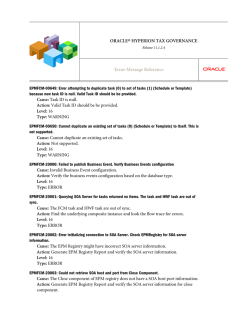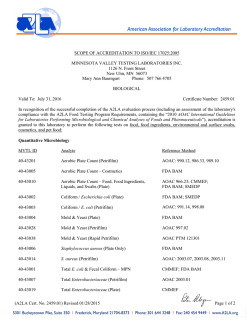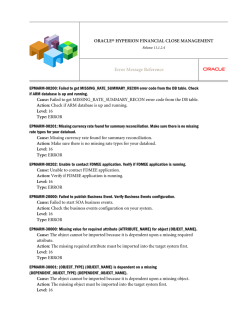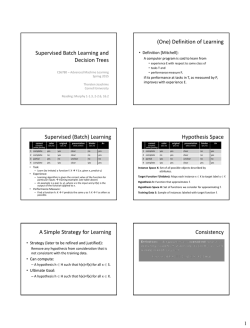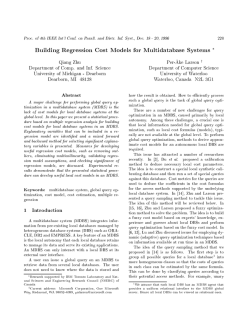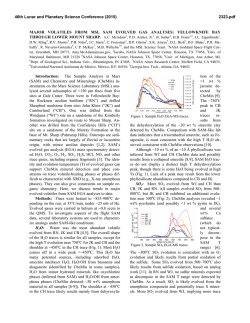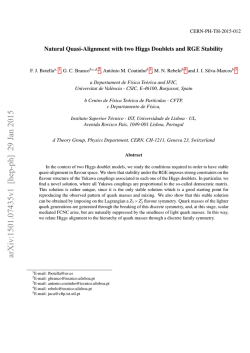
pysam documentation
pysam documentation
Release 0.8.1
Andreas Heger, Tildon Grant Belgrad, Martin Goodson
February 02, 2015
Contents
1
Contents
1.1 pysam - An interface for reading and writing SAM files
1.2 Working with BAM/SAM-formatted files . . . . . . . .
1.3 Using samtools commands within python . . . . . . . .
1.4 Working with tabix-indexed files . . . . . . . . . . . . .
1.5 Extending pysam . . . . . . . . . . . . . . . . . . . . .
1.6 FAQ . . . . . . . . . . . . . . . . . . . . . . . . . . . .
1.7 Developer’s guide . . . . . . . . . . . . . . . . . . . .
1.8 Release notes . . . . . . . . . . . . . . . . . . . . . . .
1.9 Glossary . . . . . . . . . . . . . . . . . . . . . . . . .
.
.
.
.
.
.
.
.
.
.
.
.
.
.
.
.
.
.
.
.
.
.
.
.
.
.
.
.
.
.
.
.
.
.
.
.
.
.
.
.
.
.
.
.
.
.
.
.
.
.
.
.
.
.
.
.
.
.
.
.
.
.
.
.
.
.
.
.
.
.
.
.
.
.
.
.
.
.
.
.
.
.
.
.
.
.
.
.
.
.
.
.
.
.
.
.
.
.
.
.
.
.
.
.
.
.
.
.
.
.
.
.
.
.
.
.
.
.
.
.
.
.
.
.
.
.
.
.
.
.
.
.
.
.
.
.
.
.
.
.
.
.
.
.
.
.
.
.
.
.
.
.
.
.
.
.
.
.
.
.
.
.
.
.
.
.
.
.
.
.
.
.
.
.
.
.
.
.
.
.
.
.
.
.
.
.
.
.
.
.
.
.
.
.
.
.
.
.
.
.
.
.
.
.
.
.
.
.
.
.
.
.
.
.
.
.
3
3
16
18
18
19
20
22
23
28
2
Indices and tables
29
3
References
31
Bibliography
33
i
ii
pysam documentation, Release 0.8.1
Author Andreas Heger and contributors
Date February 02, 2015
Version 0.8.1
The SAM/BAM format is a way to store efficiently large numbers of alignments [Li2009], such as those routinely are
created by next-generation sequencing methods.
This module provides a low-level wrapper around the htslib C-API as using cython and a high-level API for convenient
access to the data in SAM/BAM formatted files. Also included is an interface to the samtools command line utilities
and the tabix C-API for reading compressed and indexed tabular data.
The current version wraps htslib-1.1 and samtools-1.1.
Contents
1
pysam documentation, Release 0.8.1
2
Contents
CHAPTER 1
Contents
1.1 pysam - An interface for reading and writing SAM files
1.1.1 Introduction
Pysam is a python module that makes it easy to read and manipulate mapped short read sequence data stored in
SAM/BAM files. It is a lightweight wrapper of the htslib C-API.
This page provides a quick introduction in using pysam followed by the API. See Working with BAM/SAM-formatted
files for more detailed usage instructions.
To use the module to read a file in BAM format, create a AlignmentFile object:
import pysam
samfile = pysam.AlignmentFile("ex1.bam", "rb")
Once a file is opened you can iterate over all of the read mapping to a specified region using fetch(). Each iteration
returns a AlignedSegment object which represents a single read along with its fields and optional tags:
for read in samfile.fetch(’chr1’, 100, 120):
print read
samfile.close()
To give:
EAS56_57:6:190:289:82
EAS56_57:6:190:289:82
EAS51_64:3:190:727:308
...
0
0
0
99
99
102
<<<7<<<;<<<<<<<<8;;<7;4<;<;;;;;94<;
<<<<<<;<<<<<<<<<<;<<;<<<<;8<6;9;;2;
<<<<<<<<<<<<<<<<<<<<<<<<<<<::<<<844
69
137
99
You can also write to a AlignmentFile:
import pysam
samfile = pysam.AlignmentFile("ex1.bam", "rb")
pairedreads = pysam.AlignmentFile("allpaired.bam", "wb", template=samfile)
for read in samfile.fetch():
if read.is_paired:
pairedreads.write(read)
pairedreads.close()
samfile.close()
3
CTCAAGGTT
AGGGGTGCA
GGTGCAGAG
pysam documentation, Release 0.8.1
An alternative way of accessing the data in a SAM file is by iterating over each base of a specified region using the
pileup() method. Each iteration returns a PileupColumn which represents all the reads in the SAM file that
map to a single base in the reference sequence. The list of reads are represented as PileupRead objects in the
PileupColumn.pileups property:
import pysam
samfile = pysam.AlignmentFile("ex1.bam", "rb" )
for pileupcolumn in samfile.pileup("chr1", 100, 120):
print ("\ncoverage at base %s = %s" %
(pileupcolumn.pos, pileupcolumn.n))
for pileupread in pileupcolumn.pileups:
print (’\tbase in read %s = %s’ %
(pileupread.alignment.query_name,
pileupread.alignment.query_sequence[pileupread.query_position]))
samfile.close()
The above code outputs:
coverage at base 99 = 1
base in read EAS56_57:6:190:289:82 = A
coverage at base 100 = 1
base in read EAS56_57:6:190:289:82 = G
coverage at base 101 = 1
base in read EAS56_57:6:190:289:82 = G
coverage at base 102 = 2
base in read EAS56_57:6:190:289:82 = G
base in read EAS51_64:3:190:727:308 = G
...
Commands available in csamtools are available as simple function calls. For example:
pysam.sort("ex1.bam", "output")
corresponds to the command line:
samtools sort ex1.bam output
Analogous to AlignmentFile, a TabixFile allows fast random access to compressed and tabix indexed tabseparated file formats with genomic data:
import pysam
tabixfile = pysam.TabixFile("example.gtf.gz")
for gtf in tabixfile.fetch("chr1", 1000, 2000):
print (gtf.contig, gtf.start, gtf.end, gtf.gene_id)
TabixFile implements lazy parsing in order to iterate over large tables efficiently.
More detailed usage instructions is at Working with BAM/SAM-formatted files.
Note: Coordinates in pysam are always 0-based (following the python convention). SAM text files use 1-based
coordinates.
Note:
4
Chapter 1. Contents
pysam documentation, Release 0.8.1
The above examples can be run in the tests directory of the installation directory. Type ‘make’ before running
them.
See also:
https://github.com/pysam-developers/pysam
The pysam code repository, containing source code and download instructions
http://pysam.readthedocs.org/en/latest/
The pysam website containing documentation
1.1.2 API
SAM/BAM files
Objects of type AlignmentFile allow working with BAM/SAM formatted files.
class pysam.AlignmentFile
*(filename, mode=None, template = None, referencenames=None, referencelengths = None, text=NULL,
header=None, add_sq_text=False, check_header=True, check_sq=True)*
A SAM/BAM formatted file. The file is automatically opened.
mode should be r for reading or w for writing. The default is text mode (SAM). For binary (BAM) I/O you
should append b for compressed or u for uncompressed BAM output. Use h to output header information in text
(TAM) mode.
If b is present, it must immediately follow r or w. Valid modes are r, w, wh, rb, wb, wbu and wb0. For
instance, to open a BAM formatted file for reading, type:
f = pysam.AlignmentFile(’ex1.bam’,’rb’)
If mode is not specified, we will try to auto-detect in the order ‘rb’, ‘r’, thus both the following should work:
f1 = pysam.AlignmentFile(’ex1.bam’)
f2 = pysam.AlignmentFile(’ex1.sam’)
If an index for a BAM file exists (.bai), it will be opened automatically. Without an index random access to
reads via fetch() and pileup() is disabled.
For writing, the header of a SAM file/BAM file can be constituted from several sources (see also the samtools
format specification):
1.If template is given, the header is copied from a another AlignmentFile (template must be of type AlignmentFile).
2.If header is given, the header is built from a multi-level dictionary. The first level are the four types (‘HD’,
‘SQ’, ...). The second level are a list of lines, with each line being a list of tag-value pairs. The header is
constructed first from all the defined fields, followed by user tags in alphabetical order.
3.If text is given, new header text is copied from raw text.
4.The names (referencenames) and lengths (referencelengths) are supplied directly as lists. By default,
‘SQ’ and ‘LN’ tags will be added to the header text. This option can be changed by unsetting the flag
add_sq_text.
By default, if a file is opened in mode ‘r’, it is checked for a valid header (check_header = True) and a definition
of chromosome names (check_sq = True).
1.1. pysam - An interface for reading and writing SAM files
5
pysam documentation, Release 0.8.1
close(self )
closes the pysam.AlignmentFile.
count(self, reference=None, start=None, end=None, region=None, until_eof=False)
(reference = None, start = None, end = None, region = None, callback = None, until_eof = False)
count reads region using 0-based indexing. The region is specified by reference, start and end. Alternatively, a samtools region string can be supplied.
Note that a SAM file does not allow random access. If region or reference are given, an exception is raised.
fetch(self, reference=None, start=None, end=None, region=None, tid=None, callback=None, until_eof=False, multiple_iterators=False)
fetch aligned reads in a region using 0-based indexing. The region is specified by reference, start and end.
Alternatively, a samtools region string can be supplied.
Without reference or region all mapped reads will be fetched. The reads will be returned ordered by
reference sequence, which will not necessarily be the order within the file.
If until_eof is given, all reads from the current file position will be returned in order as they are within the
file. Using this option will also fetch unmapped reads.
Set multiple_iterators to true if you will be using multiple iterators on the same file at the same time.
The iterator returned will receive its own copy of a filehandle to the file effectively re-opening the file.
Re-opening a file creates some overhead, so beware.
If only reference is set, all reads aligned to reference will be fetched.
Note that a SAM file does not allow random access. If region or reference are given, an exception is raised.
filename
number of filename associated with this object.
getrname(self, tid)
convert numerical tid into reference name.
gettid(self, reference)
convert reference name into numerical tid
returns -1 if reference is not known.
head(self, n, multiple_iterators=True)
return iterator over the first n alignments.
This is useful for inspecting the bam-file.
multiple_iterators is set to True by default in order to avoid changing the current file position.
header
header information within the sam file. The records and fields are returned as a two-level dictionary.
The first level contains the record (HD, SQ, etc) and the second level contains the fields (VN, LN, etc).
The parser is validating and will raise an AssertionError if if encounters any record or field tags that are not
part of the SAM specification. Use the pysam.AlignmentFile.text attribute to get the unparsed
header.
The parsing follows the SAM format specification with the exception of the CL field. This option will
consume the rest of a header line irrespective of any additional fields. This behaviour has been added to
accommodate command line options that contain characters that are not valid field separators.
lengths
tuple of the lengths of the reference sequences.
pysam.AlignmentFile.references
6
The lengths are in the same order as
Chapter 1. Contents
pysam documentation, Release 0.8.1
mapped
total number of mapped alignments in file.
mate(self, AlignedSegment read)
return the mate of AlignedSegment read.
Throws a ValueError if read is unpaired or the mate is unmapped.
Note: Calling this method will change the file position. This might interfere with any iterators that have
not re-opened the file.
Note: This method is too slow for high-throughput processing. If a read needs to be processed with its
mate, work from a read name sorted file or, better, cache reads.
next
x.next() -> the next value, or raise StopIteration
nocoordinate
total number of reads without coordinates
nreferences
number of reference sequences in the file.
pileup(self, reference=None, start=None, end=None, region=None, **kwargs)
perform a pileup within a region. The region is specified by reference, start and end (using 0-based
indexing). Alternatively, a samtools region string can be supplied.
Without reference or region all reads will be used for the pileup. The reads will be returned ordered by
reference sequence, which will not necessarily be the order within the file.
The method returns an iterator of type pysam.IteratorColumn unless a callback is provided. If a
*callback is given, the callback will be executed for each column within the region.
Note that SAM formatted files do not allow random access. In these files, if a region or reference are given
an exception is raised.
Optional kwargs to the iterator:
stepper The stepper controlls how the iterator advances. Possible options for the stepper are
all use all reads for pileup.
pass skip reads in which any of the following flags are set:
BAM_FSECONDARY, BAM_FQCFAIL, BAM_FDUP
BAM_FUNMAP,
samtools same filter and read processing as in csamtools pileup. This requires a fastafile to be
given.
fastafile A FastaFile object. This is required for some of the steppers.
mask Skip all reads with bits set in mask if mask=True.
max_depth Maximum read depth permitted. The default limit is 8000.
truncate
By default, the samtools pileup engine outputs all reads overlapping a region (see note below). If
truncate is True and a region is given, only output columns in the exact region specificied.
Note: all reads which overlap the region are returned. The first base returned will be the first base of the
first read not necessarily the first base of the region used in the query.
1.1. pysam - An interface for reading and writing SAM files
7
pysam documentation, Release 0.8.1
references
tuple with the names of reference sequences.
reset(self )
reset file position to beginning of file just after the header.
seek(self, uint64_t offset, int where=0)
move file pointer to position offset, see pysam.AlignmentFile.tell().
tell(self )
return current file position.
text
full contents of the sam file header as a string
See pysam.AlignmentFile.header to get a parsed representation of the header.
unmapped
total number of unmapped reads in file.
write(self, AlignedSegment read) → int
write a single pysam.AlignedSegment to disk.
returns the number of bytes written.
An AlignedSegment represents an aligned segment within a SAM/BAM file.
class pysam.AlignedSegment
AlignedSegment() Class representing an aligned segment.
This class stores a handle to the samtools C-structure representing an aligned read. Member read
access is forwarded to the C-structure and converted into python objects. This implementation should
be fast, as only the data needed is converted.
For write access, the C-structure is updated in-place. This is not the most efficient way to build BAM
entries, as the variable length data is concatenated and thus needs to be resized if a field is updated.
Furthermore, the BAM entry might be in an inconsistent state.
One issue to look out for is that the sequence should always be set before the quality scores. Setting
the sequence will also erase any quality scores that were set previously.
bin
properties bin
cigarstring
the cigar alignment as a string.
The cigar string is a string of alternating integers and characters denoting the length and the type of an
operation.
Note: The order length,operation is specified in the SAM format. It is different from the order of the
cigar property.
Returns None if not present.
To unset the cigarstring, assign None or the empty string.
cigartuples
the cigar alignment. The alignment is returned as a list of tuples of (operation, length).
If the alignment is not present, None is returned.
The operations are:
8
Chapter 1. Contents
pysam documentation, Release 0.8.1
M
I
D
N
S
H
P
=
X
BAM_CMATCH
BAM_CINS
BAM_CDEL
BAM_CREF_SKIP
BAM_CSOFT_CLIP
BAM_CHARD_CLIP
BAM_CPAD
BAM_CEQUAL
BAM_CDIFF
0
1
2
3
4
5
6
7
8
Note: The output is a list of (operation, length) tuples, such as [(0, 30)]. This is different from the
SAM specification and the cigarstring property, which uses a (length, operation) order, for example:
30M.
To unset the cigar property, assign an empty list or None.
compare(self, AlignedSegment other)
return -1,0,1, if contents in this are binary <,=,> to other
flag
properties flag
get_aligned_pairs(self )
a list of aligned read and reference positions.
get_blocks(self )
a list of start and end positions of aligned gapless blocks.
The start and end positions are in genomic coordinates.
Blocks are not normalized, i.e. two blocks might be directly adjacent. This happens if the two blocks are
separated by an insertion in the read.
get_overlap(self, uint32_t start, uint32_t end)
return number of aligned bases of read overlapping the interval start and end on the reference sequence.
Return None if cigar alignment is not available.
get_reference_positions(self, full_length=False)
a list of reference positions that this read aligns to.
By default, this method only returns positions in the reference that are within the alignment. If full_length
is set, None values will be included for any soft-clipped or unaligned positions within the read. The
returned list will thus be of the same length as the read.
infer_query_length(self, always=True)
inferred read length from CIGAR string.
If always is set to True, the read length will be always inferred. If set to False, the length of the read
sequence will be returned if it is available.
Returns None if CIGAR string is not present.
is_duplicate
true if optical or PCR duplicate
is_paired
true if read is paired in sequencing
is_proper_pair
true if read is mapped in a proper pair
1.1. pysam - An interface for reading and writing SAM files
9
pysam documentation, Release 0.8.1
is_qcfail
true if QC failure
is_read1
true if this is read1
is_read2
true if this is read2
is_reverse
true if read is mapped to reverse strand
is_secondary
true if not primary alignment
is_unmapped
true if read itself is unmapped
mapping_quality
mapping quality
mate_is_reverse
true is read is mapped to reverse strand
mate_is_unmapped
true if the mate is unmapped
next_reference_id
the reference id of the mate/next read.
next_reference_start
the position of the mate/next read.
opt(self, tag)
retrieves optional data given a two-letter tag
overlap(self )
query_alignment_end
end index of the aligned query portion of the sequence (0-based, exclusive)
query_alignment_length
length of the aligned query sequence.
This is equal to qend - qstart
query_alignment_qualities
aligned query sequence quality values (None if not present). These are the quality values that correspond
to query, that is, they exclude qualities of soft clipped bases. This is equal to qual[qstart:qend].
Quality scores are returned as a python array of unsigned chars. Note that this is not the ASCII-encoded
value typically seen in FASTQ or SAM formatted files. Thus, no offset of 33 needs to be subtracted.
This property is read-only.
query_alignment_sequence
aligned portion of the read.
This is a substring of seq that excludes flanking bases that were soft clipped (None if not present). It is
equal to seq[qstart:qend].
SAM/BAM files may include extra flanking bases that are not part of the alignment. These bases may be
the result of the Smith-Waterman or other algorithms, which may not require alignments that begin at the
10
Chapter 1. Contents
pysam documentation, Release 0.8.1
first residue or end at the last. In addition, extra sequencing adapters, multiplex identifiers, and low-quality
bases that were not considered for alignment may have been retained.
query_alignment_start
start index of the aligned query portion of the sequence (0-based, inclusive).
This the index of the first base in seq that is not soft-clipped.
query_length
the length of the query/read.
This value corresponds to the length of the sequence supplied in the BAM/SAM file. The length of a query
is 0 if there is no sequence in the BAM/SAM file. In those cases, the read length can be inferred from the
CIGAR alignment, see pysam.AlignmentFile.infer_query_length.().
The length includes soft-clipped bases and is equal to len(query_sequence).
This property is read-only but can be set by providing a sequence.
Returns 0 if not available.
query_name
the query template name (None if not present)
query_qualities
read sequence base qualities, including soft clipped bases (None if not present).
Quality scores are returned as a python array of unsigned chars. Note that this is not the ASCII-encoded
value typically seen in FASTQ or SAM formatted files. Thus, no offset of 33 needs to be subtracted.
Note that to set quality scores the sequence has to be set beforehand as this will determine the expected
length of the quality score array.
This method raises a ValueError if the length of the quality scores and the sequence are not the same.
query_sequence
read sequence bases, including soft clipped bases (None if not present).
Note that assigning to seq will invalidate any quality scores. Thus, to in-place edit the sequence and quality
scores, copies of the quality scores need to be taken. Consider trimming for example:
q = read.qual
read.seq = read.seq[5:10]
read.qual = q[5:10]
The sequence is returned as it is stored in the BAM file. Some mappers might have stored a reverse
complement of the original read sequence.
reference_end
aligned reference position of the read on the reference genome.
aend points to one past the last aligned residue. Returns None if not available.
reference_id
reference ID
Note: This field contains the index of the reference sequence in the sequence dictionary. To obtain the
name of the reference sequence, use pysam.AlignmentFile.getrname()
reference_length
aligned length of the read on the reference genome.
This is equal to aend - pos. Returns None if not available.
1.1. pysam - An interface for reading and writing SAM files
11
pysam documentation, Release 0.8.1
reference_start
0-based leftmost coordinate
setTag(self, tag, value, value_type=None, replace=True)
Set optional field of alignment tag to value. value_type may be specified, but if not the type will be inferred
based on the Python type of value
An existing value of the same tag will be overwritten unless replace is set to False.
tags
the tags in the AUX field.
This property permits convenience access to the tags. Changes it the returned list will not update the tags
automatically. Instead, the following is required for adding a new tag:
read.tags = read.tags + [("RG",0)]
This method will happily write the same tag multiple times.
template_length
the observed query template length
class pysam.PileupColumn
PileupColumn() A pileup of reads at a particular reference sequence postion
(column). A pileup column contains all the reads that map to a certain target base.
This class is a proxy for results returned by the samtools pileup engine. If the underlying engine
iterator advances, the results of this column will change.
nsegments
number of reads mapping to this column.
pileups
list of reads (pysam.PileupRead) aligned to this column
reference_id
the reference sequence number as defined in the header
reference_pos
the position in the reference sequence (0-based).
class pysam.PileupRead
PileupRead() Representation of a read aligned to a particular position in the
reference sequence.
alignment
a pysam.AlignedSegment object of the aligned read
indel
indel length; 0 for no indel, positive for ins and negative for del
is_del
1 iff the base on the padded read is a deletion
level
the level of the read in the “viewer” mode
query_position
position of the read base at the pileup site, 0-based
class pysam.IndexedReads
IndexedReads(AlignmentFile samfile, int multiple_iterators=True) index a Sam/BAM-file by query name.
12
Chapter 1. Contents
pysam documentation, Release 0.8.1
The index is kept in memory and can be substantial.
By default, the file is re-openend to avoid conflicts if multiple operators work on the same file. Set
multiple_iterators = False to not re-open samfile.
build(self )
build index.
find(self, query_name)
find query_name in index.
Returns an iterator over all reads with query_name.
Raise a KeyError if the query_name is not in the index.
Tabix files
TabixFile opens tabular files that have been indexed with tabix.
class pysam.TabixFile
(filename, mode=’r’, parser = None)
opens a tabix file for reading. A missing index (filename + ”.tbi”) will raise an exception. index specifies an
alternative name of the index.
parser sets the default parser for this tabix file. If parser is None, the results are returned as an unparsed
string. Otherwise, parser is assumed to be a functor that will return parsed data (see for example asTuple and
asGTF).
close(self )
closes the pysam.TabixFile.
contigs
list of chromosome names
fetch(self, reference=None, start=None, end=None, region=None, parser=None, multiple_iterators=False)
fetch one or more rows in a region using 0-based indexing. The region is specified by reference, start and
end. Alternatively, a samtools region string can be supplied.
Without reference or region all entries will be fetched.
If only reference is set, all reads matching on reference will be fetched.
If parser is None, the default parser will be used for parsing.
Set multiple_iterators to true if you will be using multiple iterators on the same file at the same time.
The iterator returned will receive its own copy of a filehandle to the file effectively re-opening the file.
Re-opening a file creates some overhead, so beware.
filename
filename associated with this object.
header
the file header.
Note: The header is returned as an iterator presenting lines without the newline character.
To iterate over tabix files, use tabix_iterator():
pysam.tabix_iterator(infile, parser)
return an iterator over all entries in a file.
1.1. pysam - An interface for reading and writing SAM files
13
pysam documentation, Release 0.8.1
Results are returned parsed as specified by the parser. If parser is None, the results are returned as an unparsed
string. Otherwise, parser is assumed to be a functor that will return parsed data (see for example asTuple and
asGTF).
pysam.tabix_compress(filename_in, filename_out, force=False)
compress filename_in writing the output to filename_out.
Raise an IOError if filename_out already exists, unless force is set.
pysam.tabix_index(filename, force=False, seq_col=None, start_col=None, end_col=None, preset=None, meta_char=’#’, zerobased=False, min_shift=-1)
index tab-separated filename using tabix.
An existing index will not be overwritten unless force is set.
The index will be built from coordinates in columns seq_col, start_col and end_col.
The contents of filename have to be sorted by contig and position - the method does not check if the file is sorted.
Column indices are 0-based. Coordinates in the file are assumed to be 1-based.
If preset is provided, the column coordinates are taken from a preset. Valid values for preset are “gff”, “bed”,
“sam”, “vcf”, psltbl”, “pileup”.
Lines beginning with meta_char and the first line_skip lines will be skipped.
If filename does not end in ”.gz”, it will be automatically compressed. The original file will be removed and
only the compressed file will be retained.
If filename ends in gz, the file is assumed to be already compressed with bgzf.
min-shift sets the minimal interval size to 1<<INT; 0 for the old tabix index. The default of -1 is changed inside
htslib to the old tabix default of 0.
returns the filename of the compressed data
class pysam.asTuple
converts a tabix row into a python tuple.
A field in a row is accessed by numeric index.
class pysam.asVCF
converts a tabix row into a VCF record with the following fields:
Column
1
2
3
4
5
6
7
8
9
Field
contig
pos
id
ref
alt
qual
filter
info
format
Contents
chromosome
chromosomal position, zero-based
id
reference allele
alternate alleles
quality
filter
info
format specifier.
Access to genotypes is via index:
contig = vcf.contig
first_sample_genotype = vcf[0]
second_sample_genotype = vcf[1]
class pysam.asBed
converts a tabix row into a bed record with the following fields:
14
Chapter 1. Contents
pysam documentation, Release 0.8.1
Column
1
2
3
4
5
6
7
8
9
10
11
12
Field
contig
start
end
name
score
strand
thickStart
thickEnd
itemRGB
blockCount
blockSizes
blockStarts
Contents
contig
genomic start coordinate (zero-based)
genomic end coordinate plus one (zero-based)
name of feature.
score of feature
strand of feature
thickStart
thickEnd
itemRGB
number of bocks
‘,’ separated string of block sizes
‘,’ separated string of block genomic start positions
Only the first three fields are required. Additional fields are optional, but if one is defined, all the preceeding
need to be defined as well.
class pysam.asGTF
converts a tabix row into a GTF record with the following fields:
Column
1
2
3
4
5
6
7
8
9
Name
contig
feature
source
start
end
score
strand
frame
attributes
Content
the chromosome name
The feature type
The feature source
genomic start coordinate (0-based)
genomic end coordinate (0-based)
feature score
strand
frame
the attribute field
GTF formatted entries also define the following fields that are derived from the attributes field:
Name
gene_id
transcript_id
Content
the gene identifier
the transcript identifier
Fasta files
class pysam.FastaFile
(filename)
A FASTA file. The file is automatically opened.
This class expects an indexed fasta file and permits random access to fasta sequences.
close(self )
fetch(self, reference=None, start=None, end=None, region=None)
(reference = None, start = None, end = None, region = None)
fetch sequences in a region using 0-based indexing.
The region is specified by reference, start and end.
fetch returns an empty string if the region is out of range or addresses an unknown reference.
If reference is given and start is None, the sequence from the first base is returned. Similarly, if end is
None, the sequence until the last base is returned.
1.1. pysam - An interface for reading and writing SAM files
15
pysam documentation, Release 0.8.1
Alternatively, a samtools region string can be supplied.
filename
number of filename associated with this object.
get_reference_length(self, reference)
return the length of reference.
lengths
tuple with the lengths of reference sequences.
nreferences
number of reference sequences in the file.
references
tuple with the names of reference sequences.
Fastq files
class pysam.FastqFile
1.2 Working with BAM/SAM-formatted files
1.2.1 Opening a samfile
To begin with, import the pysam module and open a pysam.AlignmentFile:
import pysam
samfile = pysam.AlignmentFile("ex1.bam", "rb")
The above command opens the file ex1.bam for reading. The b qualifier indicates that this is a BAM file. To open a
SAM file, type:
import pysam
samfile = pysam.AlignmentFile("ex1.sam", "r")
1.2.2 Fetching reads mapped to a region
Reads are obtained through a call to the pysam.AlignmentFile.fetch() method which returns an iterator.
Each call to the iterator will returns a pysam.AlignedSegment object:
iter = samfile.fetch("seq1", 10, 20)
for x in iter:
print (str(x))
pysam.AlignmentFile.fetch() returns all reads overlapping a region sorted by the first aligned base in the
reference sequence. Note that it will also return reads that are only partially overlapping with the region. Thus the
reads returned might span a region that is larger than the one queried.
1.2.3 Using the pileup-engine
In contrast to fetching, the pileup engine returns for each base in the reference sequence the reads that map to that
particular position. In the typical view of reads stacking vertically on top of the reference sequence similar to a
16
Chapter 1. Contents
pysam documentation, Release 0.8.1
multiple alignment, fetching iterates over the rows of this implied multiple alignment while a pileup iterates over the
columns.
Calling pileup() will return an iterator over each column (reference base) of a specified region. Each call to the
iterator returns an object of the type pysam.PileupColumn that provides access to all the reads aligned to that
particular reference position as well as some additional information:
iter = samfile.pileup(’seq1’, 10, 20)
for x in iter:
print (str(x))
1.2.4 Creating SAM/BAM files from scratch
The following example shows how a new BAM file is constructed from scratch. The important part here is that the
pysam.AlignmentFile class needs to receive the sequence identifiers. These can be given either as a dictionary
in a header structure, as lists of names and sizes, or from a template file. Here, we use a header dictionary:
header = { ’HD’: {’VN’: ’1.0’},
’SQ’: [{’LN’: 1575, ’SN’: ’chr1’},
{’LN’: 1584, ’SN’: ’chr2’}] }
outfile = pysam.AlignmentFile(tmpfilename, "wh", header=header)
a = pysam.AlignedSegment()
a.query_name = "read_28833_29006_6945"
a.query_sequence="AGCTTAGCTAGCTACCTATATCTTGGTCTTGGCCG"
a.flag = 99
a.reference_id = 0
a.reference_start = 32
a.mapping_quality = 20
a.cigar = ((0,10), (2,1), (0,25))
a.next_reference_id = 0
a.next_reference_start=199
a.template_length=167
a.query_qualities="<<<<<<<<<<<<<<<<<<<<<:<9/,&,22;;<<<"
a.tags = (("NM", 1),
("RG", "L1"))
outfile.write(a)
outfile.close()
1.2.5 Using streams
Pysam does not support reading and writing from true python file objects, but it does support reading and writing from
stdin and stdout. The following example reads from stdin and writes to stdout:
infile = pysam.AlignmentFile("-", "r")
outfile = pysam.AlignmentFile("-", "w", template=infile)
for s in infile:
outfile.write(s)
It will also work with BAM files. The following script converts a BAM formatted file on stdin to a SAM formatted file
on stdout:
infile = pysam.AlignmentFile("-", "rb")
outfile = pysam.AlignmentFile("-", "w", template=infile)
for s in infile:
outfile.write(s)
1.2. Working with BAM/SAM-formatted files
17
pysam documentation, Release 0.8.1
Note, only the file open mode needs to changed from r to rb.
1.3 Using samtools commands within python
Commands available in csamtools are available as simple function calls. For example:
pysam.sort("ex1.bam", "output")
corresponds to the command line:
samtools sort ex1.bam output
Command line options can be provided as arguments:
pysam.sort("-n", "ex1.bam", "output")
or:
pysam.sort("-m", "1000000", "ex1.bam", "output")
In order to get usage information, try:
print pysam.sort.usage()
Argument errors raise a pysam.SamtoolsError:
pysam.sort()
Traceback (most recent call last):
File "x.py", line 12, in <module>
pysam.sort()
File "/build/lib.linux-x86_64-2.6/pysam/__init__.py", line 37, in __call__
if retval: raise SamtoolsError( "\n".join( stderr ) )
pysam.SamtoolsError: ’Usage: samtools sort [-n] [-m <maxMem>] <in.bam> <out.prefix>\n’
Messages from csamtools on stderr are captured and are available using the getMessages() method:
pysam.sort.getMessage()
Note that only the output from the last invocation of a command is stored.
1.4 Working with tabix-indexed files
To open a tabular file that has been indexed with tabix, use TabixFile:
import pysam
tbx = pysam.TabixFile("example.bed.gz")
Similar to fetch, intervals within a region can be retrieved by calling fetch():
for row in tbx.fetch("chr1", 1000, 2000):
print (str(row))
This will return a tuple-like data structure in which columns can be retrieved by numeric index:
for row in tbx.fetch(“chr1”, 1000, 2000): print (“chromosome is”, row[0])
By providing a parser argument to fetch or TabixFile, the data will we presented in parsed form:
18
Chapter 1. Contents
pysam documentation, Release 0.8.1
for row in tbx.fetch(“chr1”, 1000, 2000, parser=pysam.asTuple()): print
row.contig)
(“chromosome
is”,
1.5 Extending pysam
Using pyximport, it is (relatively) straight-forward to access pysam internals and the underlying samtools library. An
example is provided in the tests directory. The example emulates the samtools flagstat command and consists of
three files:
1. The main script pysam_flagstat.py. The important lines in this script are:
import pyximport
pyximport.install()
import _pysam_flagstat
...
flag_counts = _pysam_flagstat.count(pysam_in)
The first part imports, sets up pyximport and imports the cython module _pysam_flagstat. The second
part calls the count method in _pysam_flagstat.
2. The cython implementation _pysam_flagstat.pyx. This script imports the pysam API via:
from pysam.calignmentfile cimport AlignementFile, AlignedSegment
This statement imports, amongst others, AlignedSegment into the namespace. Speed can be gained from
declaring variables. For example, to efficiently iterate over a file, an AlignedSegment object is declared:
# loop over samfile
cdef AlignedSegment read
for read in samfile:
...
3. A pyxbld providing pyximport with build information. Required are the locations of the samtools and pysam
header libraries of a source installation of pysam plus the csamtools.so shared library. For example:
def make_ext(modname, pyxfilename):
from distutils.extension import Extension
import pysam
return Extension(name=modname,
sources=[pyxfilename],
extra_link_args=pysam.get_libraries(),
include_dirs=pysam.get_include(),
define_macros=pysam.get_defines())
If the script pysam_flagstat.py is called the first time, pyximport will compile the cython extension
_pysam_flagstat.pyx and make it available to the script. Compilation requires a working compiler and cython
installation. Each time _pysam_flagstat.pyx is modified, a new compilation will take place.
pyximport comes with cython.
1.5. Extending pysam
19
pysam documentation, Release 0.8.1
1.6 FAQ
1.6.1 How should I cite pysam
Pysam has not been published in print. When refering pysam, please use the github URL: https://github.com/pysamdevelopers/pysam. As pysam is a wrapper around htslib and the samtools package, I suggest cite Li et al (2009)
<http://www.ncbi.nlm.nih.gov/pubmed/19505943>.
1.6.2 pysam coordinates are wrong
pysam uses 0-based coordinates and the half-open notation for ranges as does python. Coordinates and intervals
reported from pysam always follow that convention.
Confusion might arise as different file formats might have different conventions. For example, the SAM format is
1-based while the BAM format is 0-based. It is important to remember that pysam will always conform to the python
convention and translate to/from the file format automatically.
The only exception is the region string in the fetch() and pileup() methods. This string follows the convention
of the samtools command line utilities. The same is true for any coordinates passed to the samtools command utilities
directly, such as pysam.mpileup().
1.6.3 Calling pysam.fetch() confuses existing iterators
The following code will cause unexpected behaviour:
samfile = pysam.AlignmentFile("pysam_ex1.bam", "rb")
iter1
print
iter2
print
print
= samfile.fetch("chr1")
iter1.next().reference_id
= samfile.fetch("chr2")
iter2.next().reference_id
iter1.next().reference_id
This will give the following output:
0
1
Traceback (most recent call last):
File "xx.py", line 8, in <module>
print iter1.next().reference_id
File "calignmentfile.pyx", line 1408, in
pysam.calignmentfile.IteratorRowRegion.__next__
(pysam/calignmentfile.c:16461)
StopIteration
Note how the second iterator stops as the file pointer has moved to chr2. The correct way to work with multiple
iterators is:
samfile = pysam.AlignmentFile("pysam_ex1.bam", "rb")
iter1
print
iter2
print
print
20
= samfile.fetch("chr1", all)
iter1.next().reference_id
= samfile.fetch("chr2")
iter2.next().reference_id
iter1.next().reference_id
Chapter 1. Contents
pysam documentation, Release 0.8.1
Here, the output is:
0
1
0
The reason for this behaviour is that every iterator needs to keep track of its current position in the file. Within pysam,
each opened file can only keep track of one file position and hence there can only be one iterator per file. Using
the option mulitple_iterators=True will return an iterator within a newly opened file. This iterator will not
interfere with existing iterators as it has its own file handle associated with it.
Note that re-opening files incurs a performance penalty which can become severe when calling fetch() often. Thus,
multiple_iterators is set to False by default.
1.6.4 BAM files with a large number of reference sequences is slow
If you have many reference sequences in a bam file, the following might be slow:
track = pysam.AlignmentFile(fname, "rb")
for aln in track.fetch():
pass
The reason is that track.fetch() will iterate through the bam file for each reference sequence in the order as it is defined
in the header. This might require a lot of jumping around in the file. To avoid this, use:
track = pysam.AlignmentFile(fname, "rb")
for aln in track.fetch(until_eof = True):
pass
This will iterate through reads as they appear in the file.
1.6.5 Weirdness with spliced reads in samfile.pileup(chr,start,end) given spliced
alignments from an RNA-seq bam file
Spliced reads are reported within samfile.pileup. To ignore these in your analysis, test the flags is_del == True
and indel=0 in the PileupRead object.
1.6.6 I can’t edit quality scores in place
Editing reads in-place generally works, though there is some quirk to be aware of. Assigning to AlignedRead.seq will
invalidate any quality scores in AlignedRead.qual. The reason is that samtools manages the memory of the sequence
and quality scores together and thus requires them to always be of the same length or 0.
Thus, to in-place edit the sequence and quality scores, copies of the quality scores need to be taken. Consider trimming
for example:
q = read.qual
read.seq = read.seq[5:10]
read.qual = q[5:10]
1.6.7 Why is there no SNPCaller class anymore?
SNP calling is highly complex and heavily parameterized. There was a danger that the pysam implementations might
show different behaviour from the samtools implementation, which would have caused a lot of confusion.
1.6. FAQ
21
pysam documentation, Release 0.8.1
The best way to use samtools SNP calling from python is to use the pysam.mpileup() command and parse the
output directly.
1.6.8 I get an error ‘PileupProxy accessed after iterator finished’
Pysam works by providing proxy objects to objects defined within the C-samtools package. Thus, some attention must
be paid at the lifetime of objects. The following to code snippets will cause an error:
s = AlignmentFile(’ex1.bam’)
for p in s.pileup(’chr1’, 1000,1010):
pass
for pp in p.pileups:
print pp
The iteration has finished, thus the contents of p are invalid. A variation of this:
p = next(AlignmentFile(’ex1.bam’).pileup(’chr1’, 1000, 1010))
for pp in p.pileups:
print pp
Again, the iteration finishes as the temporary iterator created by pileup goes out of scope. The solution is to keep a
handle to the iterator that remains alive:
i = AlignmentFile(’ex1.bam’).pileup( ’chr1’, 1000, 1010)
p = next(i)
for pp in p.pileups:
print pp
1.6.9 Psyam won’t compile
Compiling pysam can be tricky as there are numerous variables that differ between build environments such as OS,
version, python version, and compiler. It is difficult to build software that build cleanly on all systems and the process
might fail. Please see the pysam user group for common issues.
If there is a build issue, read the generated output carefully - generally the cause of the problem is among the first
errors to be reported. For example, you will need to have the development version of python installed that includes
the header files such as Python.h. If that file is missing, the compiler will report this at the very top of its error
messages but will follow it with any unknown function or variable definition it encounters later on.
A general advice is to always use the latest version on python and cython when building pysam. There are some known
incompatibilities:
• Python 3.4 requires cython 0.20.2 or later (see here)
1.7 Developer’s guide
1.7.1 Code organization
The top level directory is organized in the following directories:
pysam Code specific to pysam
doc The documentation. To build the latest documention type:
22
Chapter 1. Contents
pysam documentation, Release 0.8.1
make -C doc html
tests Code and data for testing
htslib Source code from htslib shipped with pysam. See setup.py about importing.
samtools Source code from csamtools shipped with pysam. See setup.py about importing.
1.7.2 Importing new versions of htslib and samtools
See instructions in setup.py to import the latest version of htslib and samtools.
1.7.3 Unit testing
Unit tests are in the tests directory. To run all unit tests, run:
nosetests -s -v tests
Note to use the -s/--nocapture option to prevent nosetests from captpuring standard output.
1.7.4 Contributors
The following people have contributed to pysam:
• Andreas Heger
• Tildon Grant Belgrad
• Kevin Jacobs
• Florian Finkernagel
• Ben Schiller
• Marcel Martin
• Gerton Lunter
• Martin Goodson
• Leo Goodstadt
1.8 Release notes
Release 0.8.2
• FastqFile is now FastxFile to reflect that the latter permits iteration over both fastq- and fasta-formatted files.
1.8.1 Release 0.8.1
• Pysam now wraps htslib and samtools versions 1.1
• Bugfixes, most notable: * issue #43: uncompressed BAM output * issue #42: skip tests requiring network if
none available * issue #19: multiple iterators can now be made to work on the same tabix file * issue #24: All
strings returned from/passed to the pysam API are now unicode in python 3 * issue #5: type guessing for lists
of integers fixed
1.8. Release notes
23
pysam documentation, Release 0.8.1
• API changes for consistency. The old API is still present, but deprecated. In particular:
– Tabixfile -> TabixFile
– Fastafile -> FastaFile
– Fastqfile -> FastqFile
– Samfile -> AlignmentFile
– AlignedRead -> AlignedSegment
* qname -> query_name
* tid -> reference_id
* pos -> reference_start
* mapq -> mapping_quality
* rnext -> next_reference_id
* pnext -> next_reference_start
* cigar = alignment
* cigarstring = cigarstring
* tlen -> query_length
* seq -> query_sequence
* qual -> query_qualities, now returns array
* qqual -> query_alignment_qualities, now returns array
* tags = tags
* alen -> reference_length, reference is always “alignment”, so removed
* aend -> reference_end
* rlen -> query_length
* query -> query_alignment_sequence
* qstart -> query_alignment_start
* qend -> query_alignment_end
* qlen -> query_alignment_length
* mrnm -> next_reference_id
* mpos -> next_reference_start
* rname -> reference_id
* isize -> template_length
* blocks -> get_blocks()
* aligned_pairs -> get_aligned_pairs()
* inferred_length -> infer_query_length()
* positions -> get_reference_positions()
* overlap() -> get_overlap()
– All strings are now passed to or received from the pysam API as strings, no more bytes.
24
Chapter 1. Contents
pysam documentation, Release 0.8.1
Other changes:
• AlignmentFile.fetch(reopen) option is now multiple_iterators. The default changed to not reopen a file
unless requested by the user.
• FastaFile.getReferenceLength is now FastaFile.get_reference_length
Backwards incompatible changes
• Empty cigarstring now returns None (intstead of ‘’)
• Empty cigar now returns None (instead of [])
• When using the extension classes in cython modules, AlignedRead needs to be substituted with AlignedSegment.
• fancy_str() has been removed
• qual, qqual now return arrays
1.8.2 Release 0.8.0
• Disabled features * IteratorColumn.setMask() disabled as htslib does not implement
this functionality?
• Not implemented yet: * reading SAM files without header
Tabix files between version 0.7.8 and 0.8.0 are not compatible and need to be re-indexed.
While version 0.7.8 and 0.8.0 should be mostly compatible, there are some notable exceptions:
• tabix iterators will fail if there are comments in the middle or the end of a file.
• tabix raises always ValueError for invalid intervals. Previously, different types of errors were raised (KeyError,
IndexError, ValueError) depending on the type of invalid intervals (missing chromosome, out-of-range, malformatted interval).
1.8.3 Release 0.7.8
• added AlignedRead.setTag method
• added AlignedRead.blocks
• unsetting CIGAR strings is now possible
• empty CIGAR string returns empty list
• added reopen flag to Samfile.fetch()
• various bugfixes
1.8.4 Release 0.7.7
• added Fastafile.references, .nreferences and .lengths
• tabix_iterator now uses kseq.h for python 2.7
1.8. Release notes
25
pysam documentation, Release 0.8.1
1.8.5 Release 0.7.6
• added inferred_length property
• issue 122: MACOSX getline missing, now it works?
• seq and qual can be set None
• added Fastqfile
1.8.6 Release 0.7.5
• switch to samtools 0.1.19
• issue 122: MACOSX getline missing
• issue 130: clean up tempfiles
• various other bugfixes
1.8.7 Release 0.7.4
• further bugfixes to setup.py and package layout
1.8.8 Release 0.7.3
• further bugfixes to setup.py
• upgraded distribute_setup.py to 0.6.34
1.8.9 Release 0.7.2
• bugfix in installer - failed when cython not present
• changed installation locations of shared libraries
1.8.10 Release 0.7.1
• bugfix: missing PP tag PG records in header
• added pre-built .c files to distribution
1.8.11 Release 0.7
• switch to tabix 0.2.6
• added cigarstring field
• python3 compatibility
• added B tag handling
• added check_sq and check_header options to Samfile.__init__
• added lazy GTF parsing to tabix
26
Chapter 1. Contents
pysam documentation, Release 0.8.1
• reworked support for VCF format parsing
• bugfixes
1.8.12 Release 0.6
• switch to samtools 0.1.18
• various bugfixes
• removed references to deprecated ‘samtools pileup’ functionality
• AlignedRead.tags now returns an empty list if there are no tags.
• added pnext, rnext and tlen
1.8.13 Release 0.5
• switch to samtools 0.1.16 and tabix 0.2.5
• improved tabix parsing, added vcf support
• re-organized code to permit linking against pysam
• various bugfixes
• added Samfile.positions and Samfile.overlap
1.8.14 Release 0.4
• switch to samtools 0.1.12a and tabix 0.2.3
• added snp and indel calling.
• switch from pyrex to cython
• changed handling of samtools stderr
• various bugfixes
• added Samfile.count and Samfile.mate
• deprecated AlignedRead.rname, added AlignedRead.tid
1.8.15 Release 0.3
• switch to samtools 0.1.8
• added support for tabix files
• numerous bugfixes including
• permit simultaneous iterators on the same file
• working access to remote files
1.8. Release notes
27
pysam documentation, Release 0.8.1
1.9 Glossary
BAM Binary SAM format. BAM files are binary formatted, indexed and allow random access.
cigar
An alignment format string. In the python API, the cigar alignment is presented as a list of tuples
(operation,length). For example, the tuple [ (0,3), (1,5), (0,2) ] refers to an alignment
with 3 matches, 5 insertions and another 2 matches.
column Reads that are aligned to a base in the reference sequence.
csamtools The samtools C-API.
fetching Retrieving all mapped reads mapped to a region.
hard clipping, hard clipped In hard clipped reads, part of the sequence has been removed prior to alignment. That
only a subsequence is aligend might be recorded in the cigar alignment, but the removed sequence will not be
part of the alignment record, in contrast to soft clipped reads.
pileup Pileup
Reference The sequence that a tid refers to. For example chr1, contig123.
region A genomic region, stated relative to a reference sequence. A region consists of reference name (‘chr1’), start
(100000), and end (200000). 0-based coordinates. Can be expressed as a string (‘chr1:10000:20000’)
SAM A textual format for storing genomic alignment information.
sam file A file containing aligned reads. The sam file can either be a BAM file or a TAM file.
samtools The samtools package.
soft clipping, soft clipped In alignments with soft clipping part of the query sequence are not aligned. The unaligned
query sequence is still part of the alignment record. This is in difference to hard clipped reads.
tabix file A sorted, compressed and indexed tab-separated file created by the command line tool tabix or the
commands tabix_compress() and tabix_index(). The file is indexed by chromosomal coordinates.
tabix row A row in a tabix file. Fields within a row are tab-separated.
TAM Text SAM file. TAM files are human readable files of tab-separated fields. TAM files do not allow random
access.
target The sequence that a read has been aligned to. Target sequences have bot a numerical identifier (tid) and an
alphanumeric name (Reference).
tid The target id. The target id is 0 or a positive integer mapping to entries within the sequence dictionary in the
header section of a TAM file or BAM file.
28
Chapter 1. Contents
CHAPTER 2
Indices and tables
Contents:
• genindex
• modindex
• search
29
pysam documentation, Release 0.8.1
30
Chapter 2. Indices and tables
CHAPTER 3
References
See also:
Information about htslib http://www.htslib.org
The samtools homepage http://samtools.sourceforge.net
The cython C-extensions for python http://cython.org/
The python language http://www.python.org
31
pysam documentation, Release 0.8.1
32
Chapter 3. References
Bibliography
[Li2009] The Sequence Alignment/Map format and SAMtools. Li H, Handsaker B, Wysoker A, Fennell T, Ruan J,
Homer N, Marth G, Abecasis G, Durbin R; 1000 Genome Project Data Processing Subgroup. Bioinformatics.
2009 Aug 15;25(16):2078-9. Epub 2009 Jun 8. PMID: 19505943
33
pysam documentation, Release 0.8.1
34
Bibliography
Index
A
G
AlignedSegment (class in pysam), 8
alignment (pysam.PileupRead attribute), 12
AlignmentFile (class in pysam), 5
asBed (class in pysam), 14
asGTF (class in pysam), 15
asTuple (class in pysam), 14
asVCF (class in pysam), 14
get_aligned_pairs() (pysam.AlignedSegment method), 9
get_blocks() (pysam.AlignedSegment method), 9
get_overlap() (pysam.AlignedSegment method), 9
get_reference_length() (pysam.FastaFile method), 16
get_reference_positions()
(pysam.AlignedSegment
method), 9
getrname() (pysam.AlignmentFile method), 6
gettid() (pysam.AlignmentFile method), 6
B
BAM, 28
bin (pysam.AlignedSegment attribute), 8
build() (pysam.IndexedReads method), 13
C
cigar, 28
cigarstring (pysam.AlignedSegment attribute), 8
cigartuples (pysam.AlignedSegment attribute), 8
close() (pysam.AlignmentFile method), 5
close() (pysam.FastaFile method), 15
close() (pysam.TabixFile method), 13
column, 28
compare() (pysam.AlignedSegment method), 9
contigs (pysam.TabixFile attribute), 13
count() (pysam.AlignmentFile method), 6
csamtools, 28
F
FastaFile (class in pysam), 15
FastqFile (class in pysam), 16
fetch() (pysam.AlignmentFile method), 6
fetch() (pysam.FastaFile method), 15
fetch() (pysam.TabixFile method), 13
fetching, 28
filename (pysam.AlignmentFile attribute), 6
filename (pysam.FastaFile attribute), 16
filename (pysam.TabixFile attribute), 13
find() (pysam.IndexedReads method), 13
flag (pysam.AlignedSegment attribute), 9
H
hard clipped, 28
hard clipping, 28
head() (pysam.AlignmentFile method), 6
header (pysam.AlignmentFile attribute), 6
header (pysam.TabixFile attribute), 13
I
indel (pysam.PileupRead attribute), 12
IndexedReads (class in pysam), 12
infer_query_length() (pysam.AlignedSegment method), 9
is_del (pysam.PileupRead attribute), 12
is_duplicate (pysam.AlignedSegment attribute), 9
is_paired (pysam.AlignedSegment attribute), 9
is_proper_pair (pysam.AlignedSegment attribute), 9
is_qcfail (pysam.AlignedSegment attribute), 9
is_read1 (pysam.AlignedSegment attribute), 10
is_read2 (pysam.AlignedSegment attribute), 10
is_reverse (pysam.AlignedSegment attribute), 10
is_secondary (pysam.AlignedSegment attribute), 10
is_unmapped (pysam.AlignedSegment attribute), 10
L
lengths (pysam.AlignmentFile attribute), 6
lengths (pysam.FastaFile attribute), 16
level (pysam.PileupRead attribute), 12
M
mapped (pysam.AlignmentFile attribute), 6
mapping_quality (pysam.AlignedSegment attribute), 10
35
pysam documentation, Release 0.8.1
mate() (pysam.AlignmentFile method), 7
region, 28
mate_is_reverse (pysam.AlignedSegment attribute), 10
reset() (pysam.AlignmentFile method), 8
mate_is_unmapped (pysam.AlignedSegment attribute),
S
10
SAM, 28
N
sam file, 28
next (pysam.AlignmentFile attribute), 7
samtools, 28
next_reference_id (pysam.AlignedSegment attribute), 10 seek() (pysam.AlignmentFile method), 8
next_reference_start (pysam.AlignedSegment attribute), setTag() (pysam.AlignedSegment method), 12
10
soft clipped, 28
nocoordinate (pysam.AlignmentFile attribute), 7
soft clipping, 28
nreferences (pysam.AlignmentFile attribute), 7
nreferences (pysam.FastaFile attribute), 16
T
nsegments (pysam.PileupColumn attribute), 12
tabix file, 28
O
opt() (pysam.AlignedSegment method), 10
overlap() (pysam.AlignedSegment method), 10
P
pileup, 28
pileup() (pysam.AlignmentFile method), 7
PileupColumn (class in pysam), 12
PileupRead (class in pysam), 12
pileups (pysam.PileupColumn attribute), 12
Q
tabix row, 28
tabix_compress() (in module pysam), 14
tabix_index() (in module pysam), 14
tabix_iterator() (in module pysam), 13
TabixFile (class in pysam), 13
tags (pysam.AlignedSegment attribute), 12
TAM, 28
target, 28
tell() (pysam.AlignmentFile method), 8
template_length (pysam.AlignedSegment attribute), 12
text (pysam.AlignmentFile attribute), 8
tid, 28
U
query_alignment_end (pysam.AlignedSegment attribute),
unmapped (pysam.AlignmentFile attribute), 8
10
query_alignment_length (pysam.AlignedSegment atW
tribute), 10
query_alignment_qualities (pysam.AlignedSegment at- write() (pysam.AlignmentFile method), 8
tribute), 10
query_alignment_sequence (pysam.AlignedSegment attribute), 10
query_alignment_start
(pysam.AlignedSegment
attribute), 11
query_length (pysam.AlignedSegment attribute), 11
query_name (pysam.AlignedSegment attribute), 11
query_position (pysam.PileupRead attribute), 12
query_qualities (pysam.AlignedSegment attribute), 11
query_sequence (pysam.AlignedSegment attribute), 11
R
Reference, 28
reference_end (pysam.AlignedSegment attribute), 11
reference_id (pysam.AlignedSegment attribute), 11
reference_id (pysam.PileupColumn attribute), 12
reference_length (pysam.AlignedSegment attribute), 11
reference_pos (pysam.PileupColumn attribute), 12
reference_start (pysam.AlignedSegment attribute), 11
references (pysam.AlignmentFile attribute), 7
references (pysam.FastaFile attribute), 16
36
Index
© Copyright 2024
